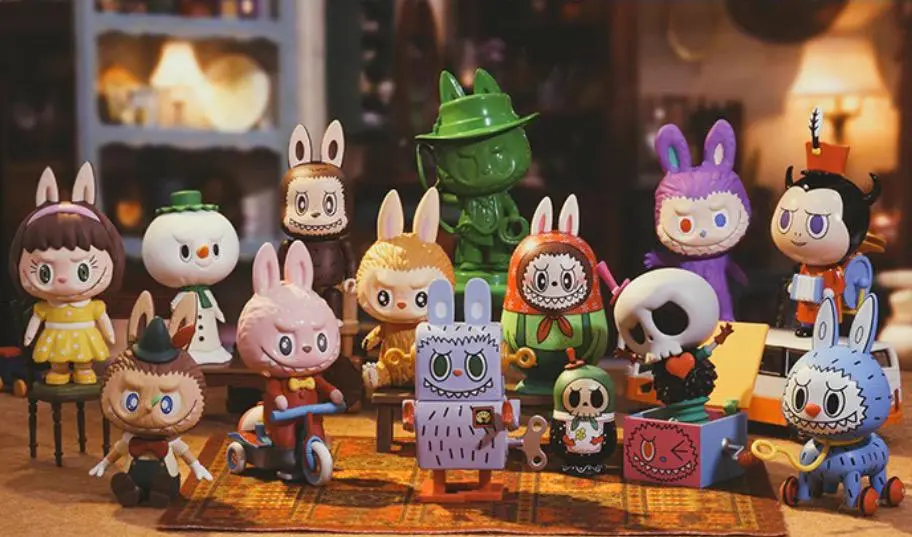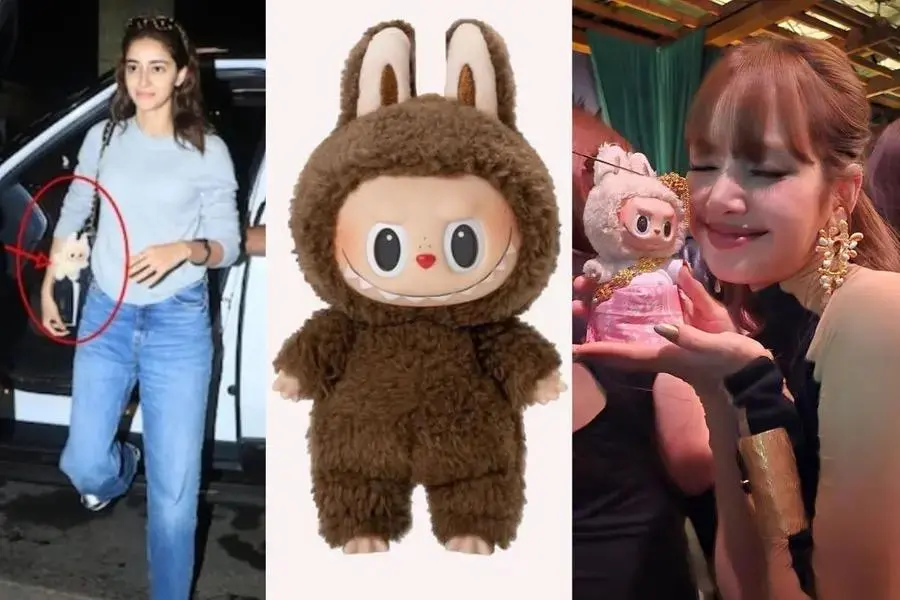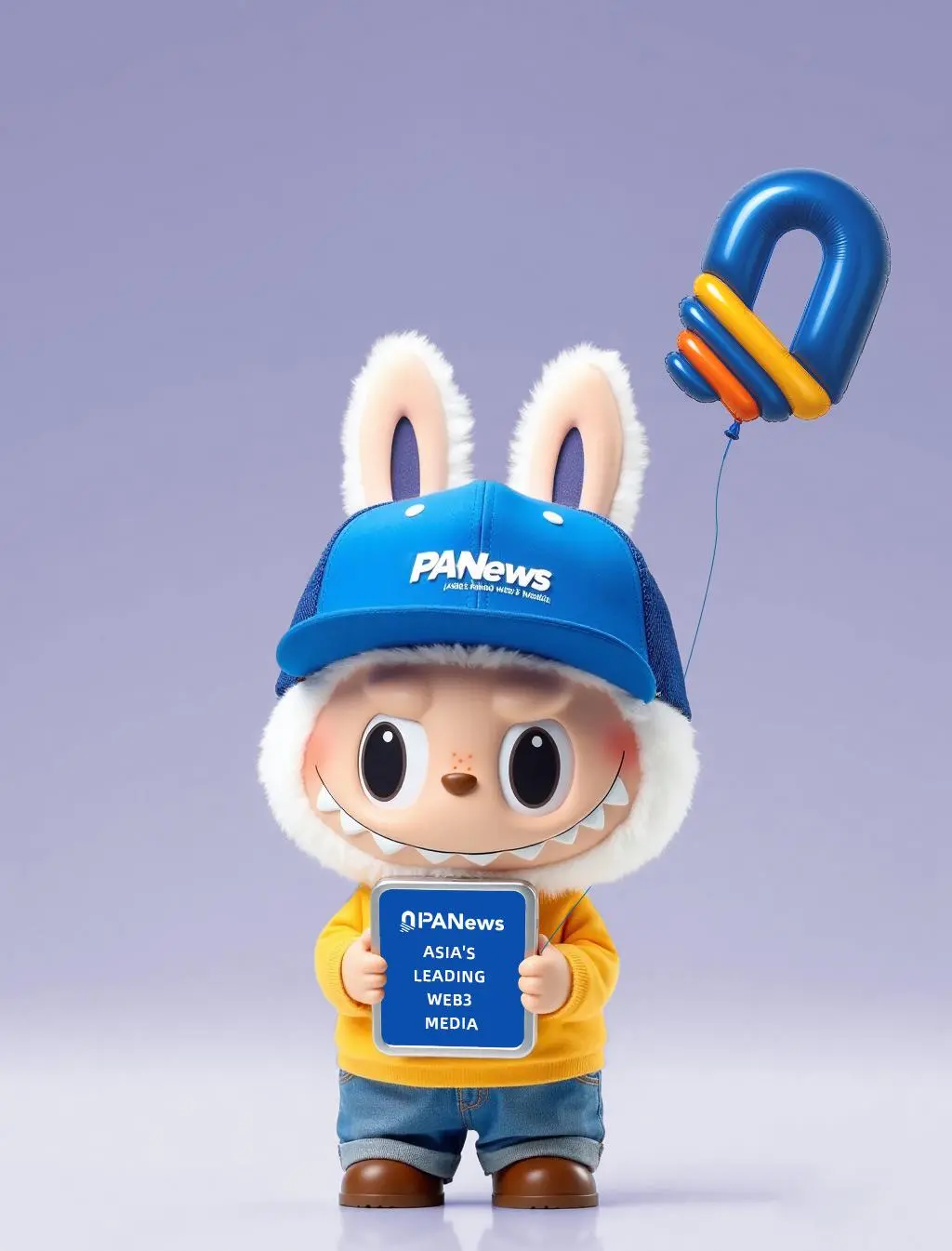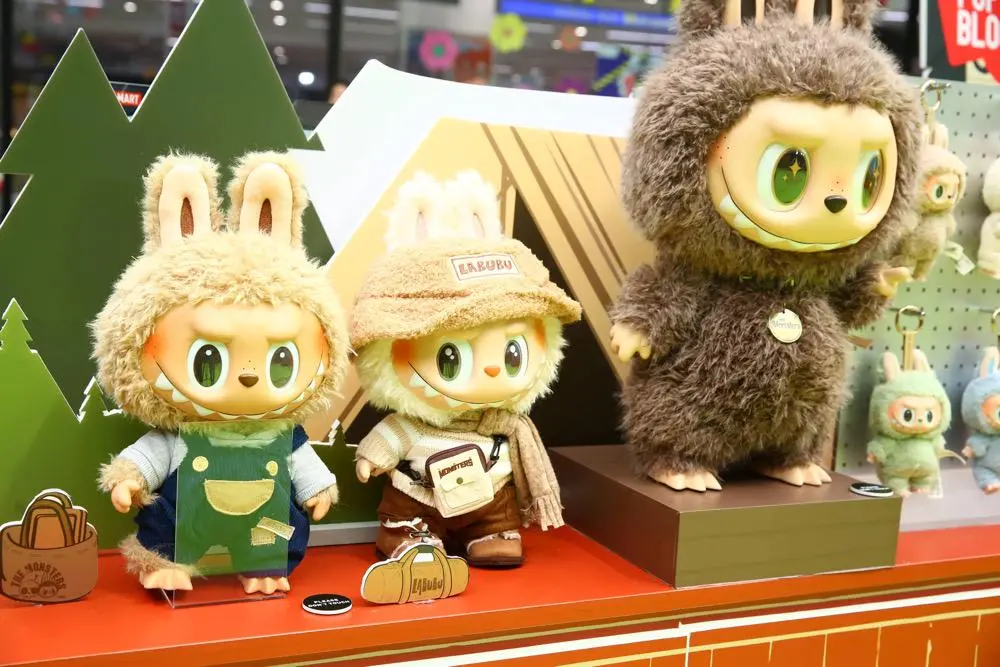Written by: Nancy, PANews
A cute yet ugly little monster, Labubu, quietly stands in the display window, with fans lining up outside to buy it, all for the surprise of possibly getting a hidden version. Similarly, a series of digital images are minted as NFTs on the blockchain, invisible in physical form, yet sold out in just a few minutes.
One is tangible, the other exists only on screens; these two forms of IP seem to inhabit the realms of reality and virtuality, yet they grow, explode, and recreate myths with astonishingly similar logic in an emotion-driven consumer era. Behind this is the medium of community interaction, the projection of individual identity, and the cultural and emotional containers birthed in the IP era.
Emotional Resonance: Connecting More Than Just Products
The charm of Labubu goes far beyond its fluffy exterior and unique design; it is an extension of the user's inner world, or perhaps a reflection of that secret monster image from childhood doodles, mirroring a deep-seated loneliness yet complex self. This seemingly simple doll actually creates real emotional companionship for users, filling their longing for belonging and love—just as psychologist Maslow pointed out the "need for belonging and love."
At the same time, Labubu satisfies the psychological phenomenon of collecting. Collecting behavior is seen in psychology as a manifestation of a sense of control. When users accumulate and display Labubu dolls, gaining a sense of achievement, this feeling of possession in turn enhances self-identity and inner satisfaction. Each doll carries a unique story: whether it’s the excitement of queuing late at night to buy it or the emotional resonance shared with friends while showcasing their collection, these moments crystallize into precious emotional treasures.
NFTs similarly evoke a deep sense of community belonging, fulfilling people's social needs for acceptance and recognition. What players collect is no longer just a string of cold codes, a symbol of faith in the cryptographic world, or a memory forged with like-minded individuals.
Based on the emotional resonance of possession and belonging, it not only satisfies users' intrinsic needs but also serves as an invisible bond connecting users and brands. Moreover, this emotional stimulation opens new growth paths for brands and creators, allowing them to cultivate multi-dimensional cultural identity and community belonging through deepening users' emotional experiences, ultimately achieving long-term loyalty and sustained engagement.
IP Narrative: More Than Just Assets, But Story Containers
In the current wave of cultural consumption, a character is never just an image. Truly vibrant IP is centered on the ability to construct a narrative universe that people are willing to immerse themselves in.

Labubu is a typical case of this. As a core member of The Monsters series, Labubu may have initially just been a big-eyed little monster with pointy ears, but as it gradually developed personality, companions, and a growth trajectory, it transformed from a doll into a character, weaving a diverse and rich virtual network alongside other characters in the series like ZIMOMO and SkullPanda. The construction of this universe relies on continuous content output, immersive experiential layouts, and deep user emotional participation mechanisms, allowing Labubu's image to extend into various physical forms such as offline theme parks, limited plush toys, blind boxes, and building blocks.
This narrative-driven IP construction approach is also evident in the NFT space. NFT projects have long realized that what truly resonates with users and sustains communities is not merely singular scarcity, but the storytelling behind the characters. For example, BAYC continuously expands the boundaries of its "Ape Universe" by launching diverse products like the metaverse, trendy clothing, games, and music; Azuki enriches user touchpoint experiences with physical comics and trendy peripherals; Pudgy Penguins breaks through the Web3 circle by entering traditional retail scenes with children's books and offline toys, emphasizing the cute and healing attributes of the penguin characters and the emotional narrative of growing up together. The commonality among these cases is that they have achieved a leap from visual symbols to cultural characters, allowing NFTs to become narrative media driven by characters, rather than just on-chain assets.
From this perspective, those IP universes with long-term narrative structures and continuous content production capabilities truly possess the cultural potential to transcend time and reach a broader audience.
Blind Box Mechanism: The Game of Scarcity and Surprise
The blind box mechanism is a psychological game based on probability, artificially creating uncertainty that allows products to break free from simple functional attributes and instead be imbued with emotional value and trading potential. Scarcity is created through probability, which in turn stimulates emotions, and emotions ultimately drive the formation of market value. The core of this mechanism is to make players obsess over the "next time" through repeated attempts, a psychological state known in psychology as "intermittent reinforcement."
Labubu's innovative gameplay, combined with the blind box mechanism, provides consumers with a sense of surprise and challenge. The hidden versions elevate ordinary products to the realm of collectibles or even assets. Each unboxing is not just an emotional consumption but a tangible probability game experience. The NFT space has also introduced similar gameplay, writing randomness and scarcity into the blockchain in the form of smart contracts. Each Mint process is essentially a digital card draw, where algorithms determine the combinations of images, backgrounds, and features, and rarity almost replicates the hidden version logic found in physical blind boxes.
More crucially, when a hidden version of Labubu is unboxed or a rare NFT is revealed, the propagation and emotional amplification mechanisms on social networks are activated, transforming rarity into hard currency after being quickly priced by the market, from sharing pictures in friend circles to bidding in secondary markets.
Premium Pricing: Market Pricing of FOMO Emotions
A hidden version of Labubu skyrocketing to tens of thousands, a rare NFT reaching millions or even tens of millions of dollars—these astonishing figures are not merely simple price behaviors but the marketization of emotional value.
FOMO (Fear of Missing Out) is one of the core emotions driving premium pricing. When buyers see others making high-priced transactions, it often triggers their impulse to rush in. At this point, many buyers no longer judge based solely on the intrinsic value of the work but act based on the psychological expectation of seizing opportunities or not being left behind by the market, forming a positive feedback loop in pricing that further drives up premiums. This behavior is essentially a psychological bet on potential future value. Moreover, market consensus is reinforced by continuously rising transaction prices and discussions on social media, further pushing prices higher.
Some speculators/resellers, and even officials, are well aware of FOMO psychology and intentionally create market hotspots, such as manipulating prices, repurchasing or releasing limited editions, hype marketing, and creating scarcity to stimulate purchasing desire, resulting in a bubble phenomenon of skyrocketing prices in the short term.
While emotion-driven dynamics bring enormous premiums and market activity, they also come with extremely high volatility risks. Once emotions reverse, prices can collapse rapidly, leading to panic selling in the market.
Celebrity Effect and Social Identity Symbols
In this era where emotional value is commodified, entities like Labubu and NFTs not only exist as collectibles but also become a new social language and identity projection medium. The endorsement of celebrities and the emotional resonance of the public together construct the symbolic status of trendy toys and NFTs in contemporary culture, allowing them to transcend their original aesthetic, functional, and collectible attributes, further evolving into cultural symbols that showcase personality, taste, and social capital.

Whether it’s Labubu becoming a symbol of global pop culture under the frequent "recommendations" of stars like Rihanna, Dua Lipa, and BLACKPINK's Lisa and Rosé, or NFTs gradually transitioning from crypto subculture to mainstream discourse due to the participation of celebrities like Takashi Murakami, Snoop Dogg, Eminem, Justin Bieber, and Jay Chou, these phenomena indicate that celebrities, as super nodes in the cultural dissemination of these IPs, inherently possess aesthetic guidance and consumption demonstration roles, often rapidly enhancing the cultural value of a trendy toy or NFT project.
In the social media era, these collectibles also transform into cultural masks to be seen. Showcasing a hidden version or a celebrity's Labubu, or setting a rare NFT as a Twitter/X avatar, users are not only displaying their collectibles but also conveying their aesthetic tastes, values, and even economic strength. In a sense, this transforms consumption behavior into a social act and identity declaration conducted through images, assets, and symbols.
Community as Productivity: The Narrative Engine and Cultural Flywheel of IP
The growth path of brands is undergoing a fundamental transformation. In the past, advertising was the main battlefield for brand expansion, where high-frequency exposure and budget stacking almost equated to monopolizing user attention; today, this formula is becoming ineffective. The true power that can penetrate noise and resonate with hearts often comes from the community.
Labubu's breakout did not rely on overwhelming commercial investments but on a group of ordinary users who love doll culture. Through daily activities like "showing off their dolls," DIY modifications, creating memes, and photography check-ins, they continuously produce UGC content. These authentic and warm content pieces spread on social media, not only lowering the barriers to dissemination but also easily igniting emotional resonance, allowing the IP to grow naturally within social networks.

PANews Re-creation of Labubu
The same is true in the NFT world. Projects like CryptoPunks, BAYC, Pudgy Penguins, and Azuki have moved towards the mainstream largely through the spontaneous creations of their holders, achieving cultural spillover. If the scarcity of NFTs endows participation with symbolic capital, then community creation grants these IPs sustained vitality.
This is not only an innovation in dissemination logic but also a transfer of narrative power. In such a system, ownership is not merely about physical asset possession but also about the right to participate in and shape brand narratives. Every piece of copy, every shared image, adds new semantic layers to the brand. Furthermore, the community itself has become a form of productivity, serving as a source of IP narratives, an incubator for creativity, and an amplifier of cultural resonance.
Aesthetic Drive: From Visual Style to Emotional Communication
The popularity of trendy toys is inseparable from their "cute yet bizarre," "rebellious yet healing" visual language. This seemingly contradictory yet highly integrated aesthetic quality injects strong personality into the works and precisely resonates with the emotional pulse and inner world of contemporary youth.

Labubu, with its contrasting aesthetics of the bizarre and the cute, brings a strong visual impact and emotional freshness, becoming a cultural symbol of self-identity for Generation Z. This visual style is not only an aesthetic choice but also a narrative strategy. The image of Labubu is both alienating and familiar, both marginal and warm; this contradictory and complex aesthetic expression aptly reflects the true portrayal of Generation Z amidst identity anxiety, emotional exhaustion, and social alienation. At the same time, Labubu breaks the previous kawaii-dominated aesthetic system of trendy toys, injecting a more angular dimension of expression into trend culture.
This aesthetic logic is similarly interpreted in the NFT world. As a new visual species in crypto culture, the aesthetic language of NFTs transcends mere attractiveness or coolness, evolving into a form of cultural resonance. For example, CryptoPunks pioneered with a minimalist pixel style, representing geek spirit and digital fundamentalism; Azuki merges anime grammar with street trends, constructing a new generation of identity in the context of Asian culture and globalization; Bored Ape Yacht Club employs a blend of cartoonish and absurd street visuals to satirize elite culture and traditional authority; Pudgy Penguins conveys a healing emotional comfort through its rounded, cute character designs… These styles are not randomly assembled but are concentrated expressions centered around identity recognition, emotional projection, and cultural belonging.
Images become the gateway to the spiritual space, and aesthetic style serves as a social language. Ultimately, whether it is tangible trendy toys like Labubu or NFT works on the blockchain, what truly resonates with people is not merely the shapes and styles, but the ability to embed emotional resonance in visuals through color, texture, and style, thereby establishing a deep connection that transcends mere product attributes.
免责声明:本文章仅代表作者个人观点,不代表本平台的立场和观点。本文章仅供信息分享,不构成对任何人的任何投资建议。用户与作者之间的任何争议,与本平台无关。如网页中刊载的文章或图片涉及侵权,请提供相关的权利证明和身份证明发送邮件到support@aicoin.com,本平台相关工作人员将会进行核查。




